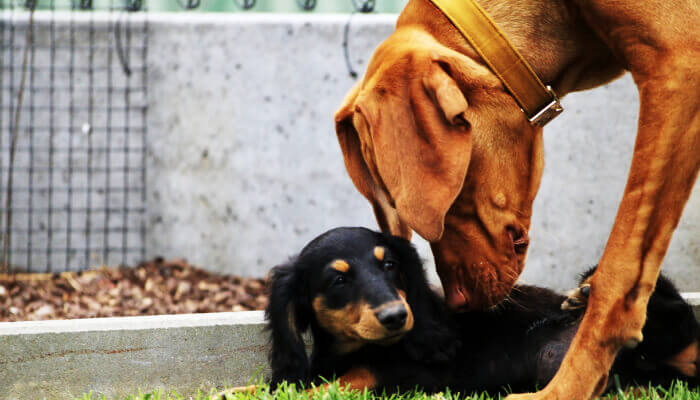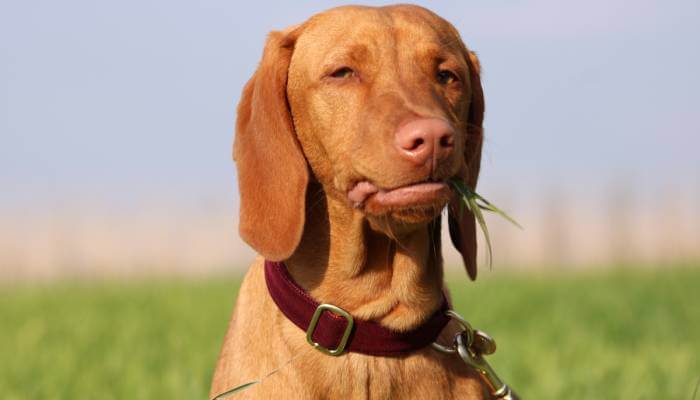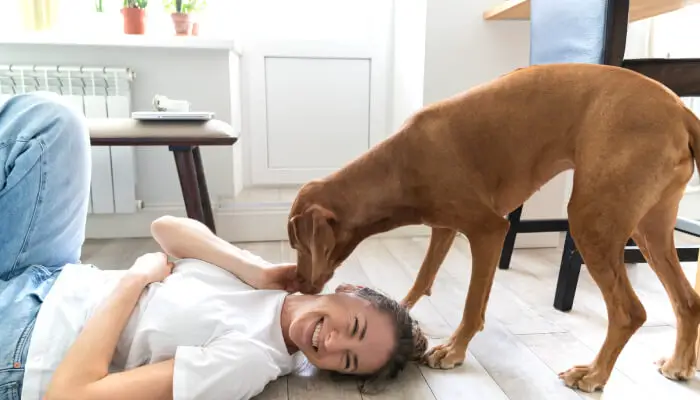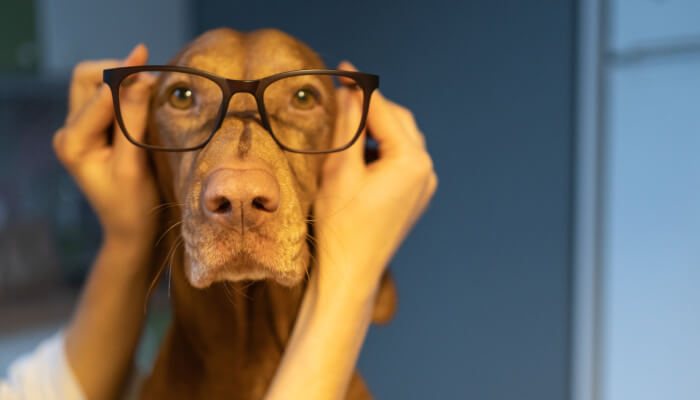With the increasing popularity and demand for exotic dog breeds like the Vizsla, people are now showing more interest in rarer color variations of common species. One such variation is that of Black Vizslas; can they exist?
So, can Vizslas be black? THE ANSWER IS YES! A black-colored dog is genetically feasible because of the recessive nature of its color. Most colors in dogs are dominant, so if there is one gene for brown fur and another for tan, you would see primarily brown pups with some tans thrown into the mix.
Moreover, there is a lot of information on the internet, but some people still believe it is impossible to find a black Vizsla. However, there are, in fact, Black Vizslas, and you will learn more about this beautiful breed below!
Are There Black Vizslas?
No, there is not a black Vizsla. There are different types of Vizslas like copper, golden red, and golden Vizslas, but there is no such breed as “black.”
The canine’s coat color comes from genes. Dogs have two sets of chromosomes, one set inherited from each parent that determines the dog’s coat color. Thus, the parents’ genotype (one set of chromosomes they possess) determines whether a pup will have a red-coat or white-coat.
The parents of Vizsla always carry the genes that have either golden, golden red, or golden rust color, and they pass along the same genes with no changes to the pup.
Can Vizslas Be Black?
No, there are no purebred Vizslas with a natural black color, and any dogs claiming to be part or all Vizsla must provide proof of this through DNA testing.
A dog’s coat color comes from the combination of its genes (DNA). Dogs have two sets of chromosomes – one set they inherit from each parent determines the dog’s coat color.
Vizsla, one pure breed, will never have a black coat unless there are health issues.
The color of the vizsla coat is always either golden, golden red, or golden rust. Anything apart from that is not a Vizsla.
There are a few black Vizsla mixes, but these dogs will not be purebred or come from a registered breed lineage.
Do Vizslas Have Black Variation?
No, there is no black variation of the breed.
The most common colors for a Vizsla are brown and gold with some variations such as red or yellow in certain parts of their coat – but never true black. So if you’re wondering if your Vizsla is black, they might have a lot of dark markings on their skin that give the illusion of being darker.
Do Vizslas Get Skin Problems?
The short answer is yes, but the long answer is a little more complicated. The most common skin problem in dogs is “seborrhea,” which means too much oil (lipids) on their skin that makes it oily and flaky. Thus, this can lead to skin infections, which over time can cause hair loss and make the coat look dull.
Many skin diseases affect dogs, and some of them can be common in vizslas. The most common is mange, but there are also allergies to flea bites, dermatitis caused by food or environmental allergens, seborrhea which causes the skin to lose moisture and become an oily bacterial infection, or yeast.
Skin diseases can result from improper diet, environmental toxins like pesticides in the air, or chemicals on plants. Your Vizsla might ingest such things during grooming and get skin problems.
A Vizsla’s coat color can change to black, but it’s not natural and indicates health problems. Black coats are usually due to skin diseases. The most common skin issue in Vizsla is mange. Besides this, it can also be due to underlying health issues like liver disease or another ailment.
All these issues change the coat color during the process of dying the hair. So, as a consequence, your Vizsla appears black.
How Can I Prevent My Vizsla From Getting Skin Problems?
There are things you should do and not do for your Vizsla’s health to be at its best. The most important thing is that you must have a well-balanced diet. It will provide the essential nutrients for a healthy coat.
Some of the things that you can do to prevent your Vizsla’s skin issues are:
- Brush your dog’s coat at least twice a week to remove dead hair and dander.
- Bathe your Vizsla once or twice a month with shampoo that is mainly for dogs.
- Don’t use shampoo made for humans on your dog, especially if they have skin issues.
- Give them supplements rich in Omega-fatty acids – this will provide additional nutrients to their diet and help reduce the amount of oil on their coat.
- Exercise regularly – exercise will increase blood flow and strengthen the immune system.
- Avoid buying dog food that contains by-products or corn as the first ingredient. However, look for whole grains such as brown rice instead of white bread to avoid skin allergies.
And the other is that you should keep your Vizsla groomed – this will also help with their skin health.
How Can I Improve The Skin Of My Vizsla?
If your Vizslas’ skin has any condition, it’s essential to treat and care for it, so they feel better.
If they have a skin allergy, you’ll need to find its cause and treat that. However, if Vizslas’ coat is dull because of an issue like seborrhea or dermatitis, treatments are available at your vet’s office that will help with this condition.
Many health problems can affect Vizslas, so be sure to follow up with your vet regularly and take care of them.
Some tips that will help you keep a healthy dog include:
- Keeping their coat groomed, prevents matting which can lead to skin problems such as dermatitis or seborrhea
- Providing the right amount of exercise for your Vizsla
- Having the proper diet for your Vizsla ensures they get the essential nutrients and prevent skin problems.
- Keeping them away from animals with mange or other diseases, so their immune system is strong enough to keep them healthy
What To Do About Dull Coats And Skin Problems In Vizslas?
It’s essential to care for your Vizsla and maintain their skin health. If you notice any changes in their coat or behavior, it might be worth consulting with a vet about the problem.
Skin problems are more common than some other diseases because they can give visible symptoms easy to spot, making them easier to treat.
If your Vizsla has skin problems, consult with an expert. They can diagnose the problem and help you figure out a solution to keep them healthy.
Owners of Vizslas (and all dogs) should remember that they need a well-balanced diet to prevent health issues such as seborrhea.
To maintain a healthy coat and skin, you should feed your Vizsla balanced meals, including omega fatty acids and zinc-rich meats like lamb or beef.
Skin problems can occur due to many things, but often it’s just due to genetics – meaning that some Vizslas are more prone to developing them than others.
The critical thing to remember is that you can treat skin problems. So, skin issues should not prevent you from enjoying your Vizsla’s companionship.
Do Vizslas Get Darker With Age?
Yes, Vizslas do get darker with age.
Vizsla’s typically have golden rust coats as adults. They will become gradually browner throughout their lives, although this is not always the case for all Vizslas. The color change tends to happen more quickly in females than males. Therefore, it can be difficult to predict when a Vizsla will turn brown.
Conclusion
In conclusion, a black Vizsla is not a real thing. But they will grow more golden as they age and become browner over time. They are also genetically prone to skin problems such as seborrhea if their diet does not include the necessary nutrients. Feeding them the right food and maintaining their coat will prevent these issues.
Hopefully, this blog post has answered the question: Are There Black Vizslas? and provided some helpful tips for caring for your dog.



